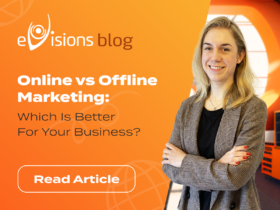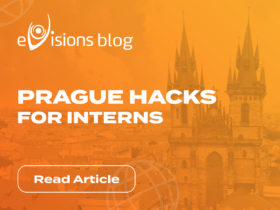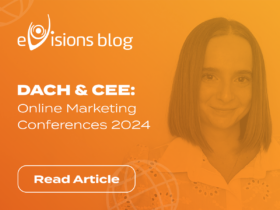The SEO Vibes conference in Budapest really had a vibe: Case studies, AI tools, on-page and linkbuilding
08. 12. 2023 AutorThe SEO Vibes conference, organised by WhitePress, took place in Budapest at the beginning of October, and we couldn’t miss it again. What did we as SEO specialists bring back from the Hungarian capital? Of course, a lot of knowledge and feelings which gave us a lot of new motivation to work.
Topic 1: Case studies
The first presentation was by Robert Niechciał, who talked about AI and in particular the choice of AI prompts to provide better content. A prompt can be almost as exhaustive as the final article. He also emphasised the need to not only track the top 10 and analyse the competition (because everyone is doing that), but also to come up with your own idea and create something usable (a database or tool) that the competition doesn’t have.
The most interesting case study was an experiment conducted by Kyle Roof, where he created and optimised a website entirely in Latin that ranked in the top positions for the query “Rhinoplasty Plano”. Although the experiment is quite old and Google has already deindexed the site, Search Engine Journal published an article about the whole case.
Kyle Roof also ran some experiments that confirmed that the H1 heading is indeed significantly more important than H2 and that all subheadings below H4 are not considered. Another of his experiments showed the relationship between page indexing and Google advertising pages that were not in Google’s index were included in the index after setting up contextual advertising.
Natalia Witczyk also presented relevant findings. During her work on Barcelona Turisme, for example, she found that search intent can often be twofold. Example: Barcelona – could mean either a football club or a city.
Another presentation was about the management and leadership of a large online marketing company (with more than 200 employees), given by its Romanian CEO Mihai Vânătoru. He presented the important steps that give the company the ability to control all projects, to react quickly to negative changes and to easily expand the agency with new teams, as well as allowing to build a team of right specialists for each project. These steps include:
- setting checkpoints;
- creating dashboards (even using AI) that aggregate critical data from all projects and send alerts;
- managing all teams as small and independent companies that have the right to make decisions
Useful tips for consultants
During the first session, there were also practical tips that can make SEO consultants’ work easier and time-saving.
- Proper communication with the client is important. Sometimes clients use different terminology and, for example, by “SEO competitors” they mean companies rather than websites that rank higher.
- A good communication and step-by-step work on the most important technical issues allows solving them faster than writing long and complicated audits, which clients often don’t understand.
Topic 2: AI
In the second part of the conference, the main idea was that any problem can be solved with artificial intelligence.
- Using AI, it is possible to create a huge database without knowing any programming language.
- For example, AI can learn how to cluster keywords more accurately on its own data set.
- AI can create scripts that quickly check the presence or absence of a keyword on a page.
- It can create technical briefs for copywriters based on an analysis of competing copy.
- It can also make a script to track visitors on the site (instead of Google Analytics, which doesn’t work without cookies), etc.
Topic 3: On-page and linkbuilding
The third part of the conference focused on keyword handling, blog features, and mistakes that reduce e-commerce conversions.
Keyword conversion
In terms of a large e-commerce site like an aggregator, it’s better to consider not only the search volume of a keyword, but also determine the profit that keyword brings. These values can be drawn from PPC data. Example for a travel aggregator: if people tend to buy some types of tours more than others – even with a disproportionate search volume – it is more profitable for a company to target pages/keywords with a higher conversion rate, even if they don’t get as much traffic.
Content is created according to people’s needs
Blog content should not only drive traffic, but also sell and build community. For example, the head of marketing at Romanian Answear said that SEO content based purely on competitors or top industrial fashion magazines didn’t convert at all because the audience was looking for something completely different. Even though Elle magazine was an SEO competitor and industry leader, people didn’t need high fashion advice, they just wanted simple tips for everyday life.
Website errors drop conversions
Discussion was also held on some of the critical problems of e-commerce websites that drop conversions, for example:
- Duplications caused by differences in product sizes and colours,
- unlocalized or very long URLs,
- too long texts in blog articles,
- non-optimised product pages, poor and complicated navigation,
- poor UX and complicated ordering process.
Our Takeaways
If you’re a fan of SEO, the SEO Vibes conference is an absolute must-have. It’s worth it not only for the wide-ranging presentations by inspiring speakers, but also for the networking with people in the industry. You can find time for that between talks, as well as at the evening events. Get your heels out of the office and go recharge your batteries among your people – passionate enthusiasts who want to learn something new and keep up with the constantly evolving online world.










Komentáře